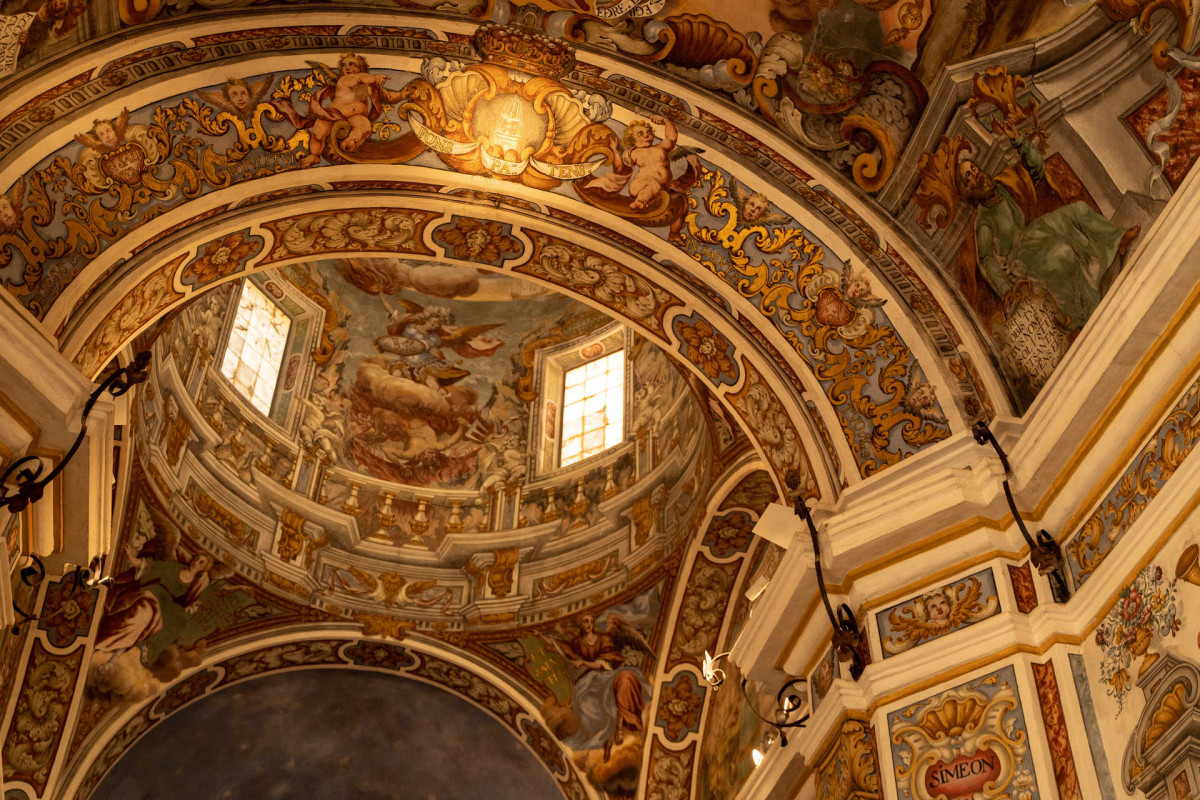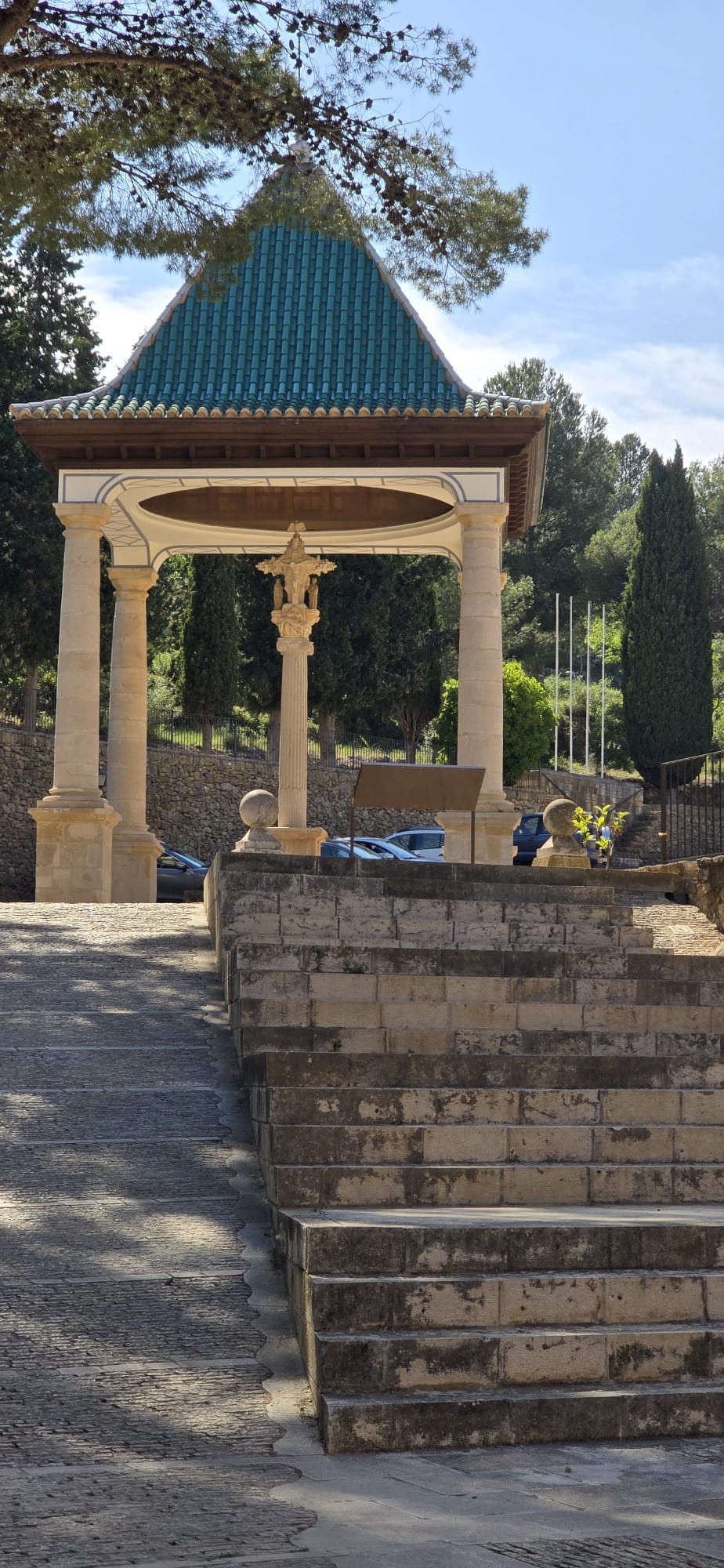Visitamos el Real Santuario de la Virgen de la Salud de Traiguera
ART ESP / ING
En vísperas de nuestra tan esperada visita a Mas Cervera, el equipo de Appleton Private University tuvo el inmenso honor de emprender un viaje conmovedor a la esencia misma de la historia y la devoción local: el Real Santuario de la Virgen de la Salud de Traiguera. Esta experiencia, situada en una comarca de profundas raíces y tradiciones olvidadas, fue mucho más que una simple parada; fue una inmersión en un pasado donde el ingenio humano se manifestaba en oficios hoy casi extintos.
El Santuario, una joya arquitectónica y espiritual, nos recibió con su imponente presencia, testigo silencioso de siglos de fe y vida comunitaria. Recorrer sus históricos pasillos y contemplar su venerable estructura nos transportó a una época en la que la vida giraba en torno a la tierra, el trabajo manual y una profunda conexión con lo trascendente.
Pero más allá de la majestuosidad del santuario, lo que verdaderamente capturó nuestra atención fue el entorno que lo rodea, una región que fue cuna de profesiones hoy extintas. Tuvimos la oportunidad de reflexionar sobre la pericia y el arte de los trabajadores de la piedra, cuya labor meticulosa esculpió no solo edificios sagrados como el santuario, sino también las infraestructuras cotidianas que sostenían la vida de sus habitantes. Imaginar el ritmo de sus martillos, el sonido de las cinceladas y la habilidad de sus manos al dar forma a la roca nos evocó un profundo respeto por estos maestros artesanos.
De igual modo, la riqueza de la alfarería en esta zona nos impresionó profundamente. Esta comarca fue un vibrante centro de producción cerámica, donde el barro cobraba vida en manos expertas para transformarse en piezas utilitarias y artísticas. La sencillez de la materia prima contrastaba con la complejidad de las técnicas y la sabiduría transmitida de generación en generación para crear objetos esenciales para la vida diaria. Estos alfareros, hoy en su mayoría ausentes, representaban una forma de vida en la que la creatividad y la subsistencia estaban intrínsecamente ligadas.
Esta visita al Real Santuario de la Virgen de la Salud de Traiguera fue un recordatorio palpable de cómo la historia y la cultura se entrelazan con el desarrollo económico y social. Nos permitió apreciar el valor de las habilidades manuales que, aunque hoy eclipsadas por la tecnología, fueron el motor de civilizaciones. Es una lección vital para nuestra institución, Appleton Private University, que busca precisamente formar líderes con una comprensión holística del mundo, capaces de valorar el legado del pasado mientras construyen el futuro.
Fue una experiencia enriquecedora que nos preparó espiritualmente y mentalmente para los encuentros venideros en Mas Cervera, recordándonos la importancia de las raíces, la historia y el ingenio humano en todas sus manifestaciones.
-------------
On the eve of our highly anticipated visit to Mas Cervera, the Appleton Private University team had the immense honor of embarking on a moving journey to the very essence of local history and devotion: the Royal Sanctuary of the Virgen de la Salud in Traiguera. This experience, located in a region of deep roots and forgotten traditions, was much more than just a stop; it was an immersion into a past where human ingenuity manifested itself in crafts now almost extinct.
The Sanctuary, an architectural and spiritual gem, welcomed us with its imposing presence, a silent witness to centuries of faith and communal life. Walking through its historic halls and contemplating its venerable structure transported us to a time when life revolved around the land, manual labor, and a deep connection to the transcendent.
But beyond the sanctuary's majesty, what truly captured our attention was the surrounding environment, a region that was once home to professions now extinct. We had the opportunity to reflect on the skill and artistry of the stonecutters, whose meticulous work sculpted not only sacred buildings like the sanctuary but also the everyday infrastructures that sustained the lives of its inhabitants. Imagining the rhythm of their hammers, the sound of chisels, and the dexterity of their hands shaping rock evoked a profound respect for these master artisans.
Similarly, the richness of pottery in this area deeply impressed us. This region was once a vibrant center of ceramic production, where clay came alive in expert hands to transform into utilitarian and artistic pieces. The simplicity of the raw material contrasted with the complexity of the techniques and the wisdom passed down from generation to generation to create objects essential for daily life. These potters, now mostly absent, represented a way of life where creativity and subsistence were intrinsically linked.
This visit to the Royal Sanctuary of the Virgen de la Salud in Traiguera was a palpable reminder of how history and culture intertwine with economic and social development. It allowed us to appreciate the value of manual skills that, though now overshadowed by technology, were the engine of civilizations. It is a vital lesson for our institution, Appleton Private University, which precisely seeks to train leaders with a holistic understanding of the world, capable of valuing the legacy of the past while building the future.
It was an enriching experience that prepared us spiritually and mentally for the upcoming meetings in Mas Cervera, reminding us of the importance of roots, history, and human ingenuity in all its manifestations.



